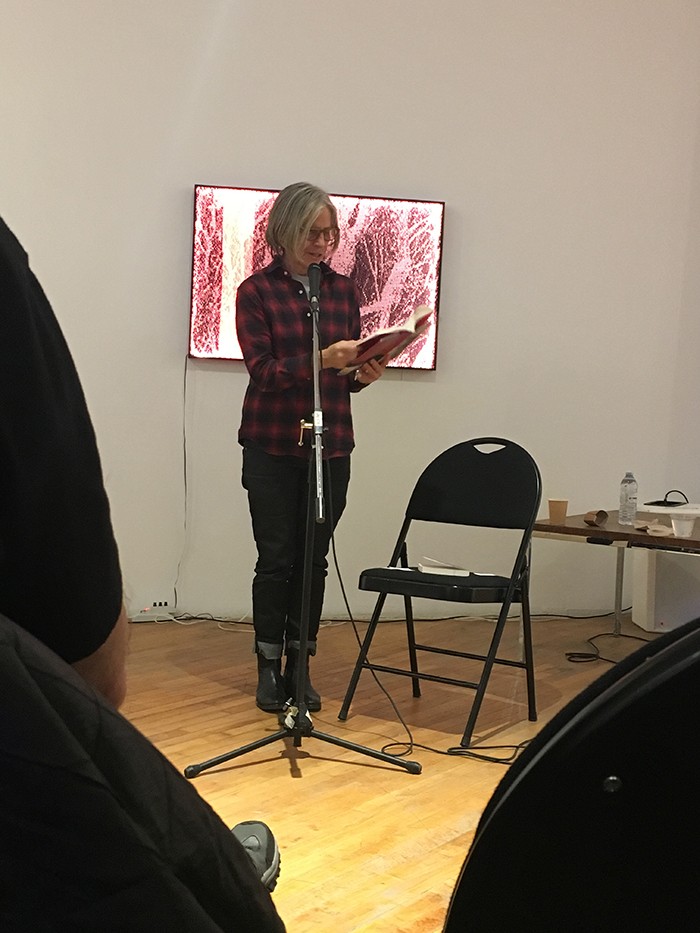Queer gatherings beyond fear
Visions for community organizing and the need for space
When the poet Eileen Myles came to town to launch their book Evolution, a dinner was organized in their honour featuring local queer poets and writers at all stages of their careers. Stretching somewhat awkwardly across two tables, we chatted, introduced ourselves, caught up and performed the work of community.
At one end, the emerging poets and I reflected on how rare it is to have the opportunity to create, even for one night, an intentionally intergenerational queer space.
As we eased into one another’s company, the conversation returned many times to this question: For those among us who, for any multitude of reasons, do not feel safe, welcome or interested in party spaces, where can we go to be together?
Eileen Myles reads from Evolution. A gathering in their honour created an intergenerational queer space. 
In last week’s cover feature, Callie Lugosi shared an incomplete queer history of the city with us, highlighting the legacy of advocacy and community we have inherited. Many people fought, and some died, to ensure the freedoms and protections queers now enjoy.
And yet, with those gains, there have also been losses: closures of queer bars and community spaces, folding of queer television shows and publications and the dissolution of queer advocacy groups.
Has the desire for queer community-led collectives and coalitions smouldered as (albeit some forms of) queerness has become more socially accepted? Or, could it be that folks, already overburdened by professional obligations in an increasingly gig-oriented economy, are finding it more difficult to carve out space to run or contribute meaningfully and consistently to, such spaces?
It’s true that fear lends urgency to community organizing. Queer history, as documented in literature or as told to us by our Elders, located the power of queer bars in their ability to act as community safer spaces when the price of being visibly queer outside of these designated spaces was much higher.
Community initiatives like QPOC (Queer People of Colour) and the recent revival of the Gender Play Cabaret see this commitment to visibility and safer expression that mark our history continue.
But we also know that much has changed. Even language has evolved, with “queer” emerging as a political identity that captures a wide range of expressions, orientations and identities – the boundaries of which continue to be hotly contested even within the community itself.
And, perhaps, it is precisely this fullness, this excess of lived experiences, that some see as fracturing. Queer community organizing today is messy, even when approached with the best of intentions.
But it also isn’t reason enough not to try. Instead, what would a queer landscape look like that sought to organize around, and towards, the multiplicity of the community/communities it serves?
I want queer artist collectives. I want queer speed history. I want intergenerational mentorships, like the Youth/Elders Project in Toronto. I want queer freak theatre. I want queer coffee hours and kitchen table meetings. I want queer cultural outings and professional mixers. I want queer co-ops and social enterprises. I want more than a nod in public places.
There is power in gathering beyond fear. Gathering in shared oppression or difficulty but also in solidarity, across difference. Gathering for kinship, for hope, after the bar closes.
Dunja Kovačević is the comments editor of The Uniter. If you’re interested in building queer futures, connect with her on Twitter and Instagram @kvirandnow.
Published in Volume 73, Number 10 of The Uniter (November 15, 2018)






